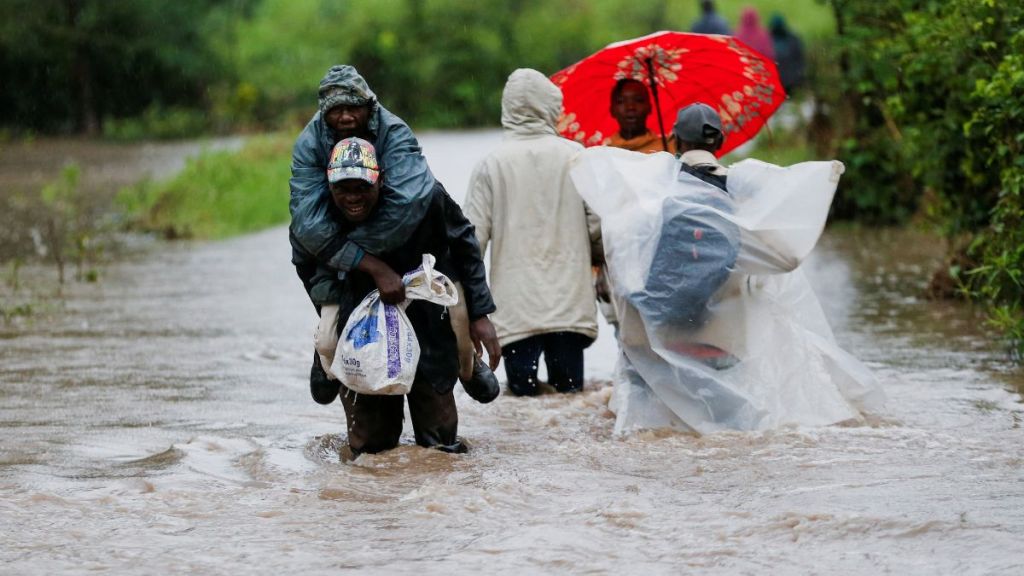After weeks of relentless rainfall across Kenya, several farms have submerged in the flood waters. After only a night of heavy downpour, water levels would rise to shoulder height.
The rains, which began in mid-March, have caused immediate dangers and left lingering threats. Nearly 300 people have died, dams have reached historically high levels, and the government has ordered residents to evacuate flood-prone areas, even threatening to bulldoze the homes of those who refuse.
Kenya’s government has described recent events as “a clear manifestation of the erratic weather patterns caused by climate change,” shaking the couple’s financial security and optimism.
According to a report by AP, Martha Waema and her husband, a farmer couple, surveyed their submerged farm. The couple had anticipated a return of 200,000 shillings ($1,500) from their three acres after investing 80,000 shillings ($613) in maize, peas, cabbages, tomatoes, and kale. However, their hopes have been shattered and destroyed.
“I have been farming for 38 years, but I have never encountered losses of this magnitude,” said the 62-year-old who is a mother of 10.
Food security and other issues
A looming food security crisis and rising prices are ahead, complicating President Kenyatta’s efforts to boost agriculture as a key economic driver. The flooding has destroyed crops on over 168,000 acres (67,987 hectares), less than 1% of Kenya’s agricultural land. As farmers tally their still-unknown losses, opposition politicians criticize the government’s lack of preparedness for climate change and related disasters, emphasizing the need for sustainable land management and improved weather forecasting.
Waema now digs trenches to protect what’s left of his farm in Machakos County, on the outskirts of Nairobi. However, not all farmers are in distress. About 200 kilometers (125 miles) west of Waema’s farm, 65-year-old James Tobiko Tipis has protected his 16-acre farm in Olokirikirai from flooding by terracing crops to prevent landslides. “We used to lose topsoil and whatever we were planting,” he said.
Experts stress the importance of soil erosion prevention, anticipating worsening conditions from future climate shocks. Jane Kirui, an agricultural officer in Narok County, highlights the benefits of terracing and cover crops for water absorption. Despite the ample rainfall, water conservation efforts in Kenya’s rural areas remain insufficient.
Professor John Gathenya from Jomo Kenyatta University of Agriculture and Technology recommends diversifying crops and enhancing soil’s natural water retention capacity. “The soil remains the biggest reservoir for water,” he said, advocating for soil conservation over large infrastructure projects like dams. Protecting soil involves practices like curbing deforestation, which has increased severe runoff. “We are opening land in new fragile environments where we need to be even more careful the way we farm,” Gathenya said. “In our pursuit for more and more food, we are pressing into the more fragile areas but not with the same intensity of soil conservation that we had 50 years back.”

